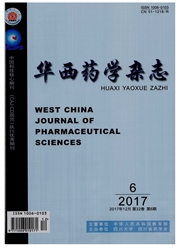

 中文摘要:
中文摘要:
目的 观察Sirt3在原发性肝细胞癌(HCC)中的表达,并探讨过表达h Sirt3对人肝癌Hep G2细胞的存活及增殖影响。方法 采用免疫组化法检测HCC组织和癌旁正常肝组织中Sirt3的表达;构建h Sirt3腺病毒载体,转染Hep G2细胞并过表达Sirt3蛋白,采用WST-1和Edu实验评价Sirt3对Hep G2细胞的存活及增殖作用。结果 与正常肝组织比较,肝癌组织的Sirt3表达量明显降低;Ad-h Sirt3腺病毒感染Hep G2细胞后明显降低了细胞的存活率,抑制细胞生长。结论 肝癌组织中Sirt3呈低表达或表达缺失,提示Sirt3的下调可能与HCC的发生密切相关;过表达Sirt3明显抑制Hep G2细胞株的存活及增殖,提示Sirt3可能是治疗肝癌的潜在靶点。
 英文摘要:
英文摘要:
OBJECTIVE To detect expression the of Sirt3 protein in primary hepatocellular carcinoma (HCC) tissues and to evalu- ate the effect of hSirt3 gene overexpression on viability and proliferation of HepG2 cells. METHODS Sirt3 expressions in HCC and peritumoral tissues were detected by immunochemical staining. After HepG2 cells were infected by Ad5 - hSirt3, WST - 1 and EdU methods were used to evaluate cell viability and proliferation, respectively. RESULTS Sift3 expression was significantly signifincantly lowered in the HCC tissues than in the normal peritumoral liver tissues. Compared with control cells, adenovirus - mediated hSirt3 overexpression lower cell viability and EdU - positive nuclei in HepG2 ceils. CONCLUSION The low expression of Sift3 in the tissues from primary hepatoeellular carcinoma patients indicated that the downregnlated Sirt3 might be involved in the pathogenesis and development of liver cancers. In addition, Sirt3 overexpression induced a significant decrease in HepG2 cell viability and proliferation, which indicated that Sirt3 might be a potential therapeutic target for liver cancers.
 同期刊论文项目
同期刊论文项目
 同项目期刊论文
同项目期刊论文
 期刊信息
期刊信息
